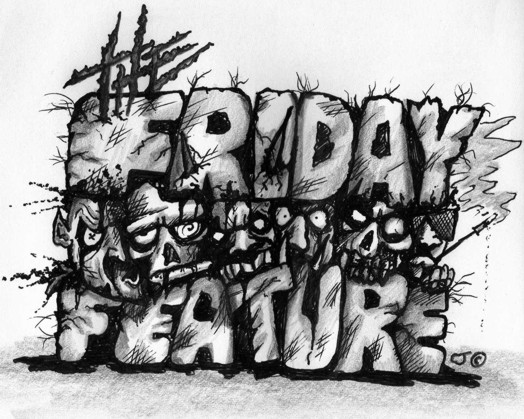
For this two part Feature, Ross Hughes and Dr Lenera join forces in examining one of horror’s most unusual franchises!
When a night watchmen hears the sound of a hydraulic press being used in the middle of the night, he investigates and discovers that a woman, Helene Delambre, has just crushed the head and arm of her husband Andre. Though she confesses to the crime, she seems obsessed with catching a fly with a white head. When Andre’s brother Francois tells Helene he has caught the fly, she begins to tell him the real reason she killed her husband. Several months ago, Andre created a matter transmitter that disintegrates objects and then rebuilds them in a different place. After trying it out on a cat, which fails to regenerate, and then more successfully on a guinea pig, he tries it out on himself, but something went wrong, to the point that he wouldn’t let Helene see him…….

Although I think most people, especially horror fans, would agree that the 1986 version of The Fly is better than this 1958 original, there is no doubting that the older movie entered popular culture in a way the later film failed to do. From The Simpsons to The Emperor’s New Groove, its basic idea and in particular two things – the image of a man with the head of a fly, and a certain bit of dialogue which is “help me, help me”, have been referenced and spoofed time and time again. Even if you haven’t seen this movie, you have probably seen several allusions to it. Modern day viewers seeing it for the first time may well be disappointed by the film’s slow pace and relative lack of conventional horror, but for the the more patient viewer it can still be quite a rewarding experience. It handles its basically absurd premise with a great deal of seriousness and becoming a particularly interesting version of the ‘scientist who goes too far’ concept that has been a mainstay of horror and science fiction over the decades, probably because the concept has a basic morality imbedded in it however much terror and excitement are shown!
The Fly originated as a novella by George Langelaan published in the June 1957 issue of Playboy. Langelaan was a British Intelligence agent during World War 2 who several times underwent plastic surgery to escape the Nazis, an experience which obviously inspired him to write his story. B Movie director Kurt Neumann bought it to producer Robert Lippert, and the two intended to make it as a black and white low budget feature but Fox became interested and the budget was raised to incorporate colour and Widescreen, something only the most prestigious science fiction and horror films received even in 1958. The screenwriter was James Clavell, later a popular novelist with books like Shogun, and his script actually stuck quite close to the original story. The major changes were relocating the events from France to Canada, having more scenes with Andre before his transformation, and removing a potentially quite horrific bit where Andre tries to reverse the process and ends up with the atoms of a cat as well. Langelaan ended his novella with Helene committing suicide, and originally Clavell retained this, but was asked to alter to a slightly more positive one of Helene just being observed by the police. Star David Hedison has often expressed his disappointment that a major love scene between his character and his wife was cut out, but never mind, the film, which was only shot in only eighteen days on a limited number of sets, did far better business than Fox could have dreamed and after Hammer’s Dracula was the second biggest horror film of the year, though critics typically were mixed in their response. Sadly Neumann died a month after the premier before the film went on general release, and was never able to enjoy having his greatest commercial success.
The film opens in tremendous fashion, with the night watchman hearing the noise of the press being used [twice!], following his cat into the factory where he sees Helene, looking beautiful and almost serene in her lovely dress, standing beside the machine where you can make out a body trapped and the head and right arm unseen under the actual press but causing a great amount of blood to leak out. It’s an arresting, almost surreal image, and really gets the film off to a good start, though the next twenty minutes or so, detailing the investigation and containing lots of dialogue scenes between Helene and Francois, is extremely slow and perhaps could have been shortened. Once we get into the lengthy flashback, it is a great deal of time before Andre becomes the Fly. Instead, in a manner which is terms of pacing is very similar to that of Curse Of Frankenstein released the proceeding year, Clavell’s script leisurely establishes characters and setting, showing the Delambre family Helene, Andre and their young son Andre as a happy unit before things start to go wrong, and methodically detailing his experiments, beginning with a plate being transported, which works except for writing being back to front, then the house cat, which leads to a really chilling moment where the animal disappears and all you here is a sad “meow”. These scenes are surprisingly convincing; the laboratory equipment looks reasonably realistic, while the dialogue avoids the usual histrionics and even mentions the to- be-invented flat screens!
 When Andre does eventually become the Fly, the film keeps his head hidden under a tea towel. Although it is mentioned that his personality is becoming less and less human, do not expect lots of suspenseful sequences of the monster stalking and killing people. Instead, the film keeps him inside his laboratory communicating with Helene via notes, and concentrates on Helene’s emotions, something that may disappoint monster movie fans but does make you suspend disbelieve as much as possible. When Andre’s head is finally revealed, it’s very well handled with an especially effective shot from Andre’s point of view of Helene, but the actual fly mask, whilst painstakingly created to approximate the head of an actual fly as much as possible, is probably more likely to bring chuckles today! Still, star Patricia Owen’s fear is very convincing, probably because she had a fear of insects and only saw the makeup for the first time while the scene was being shot. Despite the overall serious tone, there are stupid plot elements which stick in the mind, such as – Andre ends up with a fly head and arm human-sized, while a fly receives Andre’s head and arm, only they are the size of a fly! Still, this brings me to the film’s unforgettable ending, which is both hilarious and chilling. For those who haven’t seen it, I’m not going to go into details, but it is quite audacious and I guarantee you will have the words “help me, help me” going around inside your head for days! David Hedison and Herbert Marshall don’t look at each other during the scene, which required multiple takes, because they were pissing themselves! The cheesy lines which close the film are unnecessary though and sound like they added.
When Andre does eventually become the Fly, the film keeps his head hidden under a tea towel. Although it is mentioned that his personality is becoming less and less human, do not expect lots of suspenseful sequences of the monster stalking and killing people. Instead, the film keeps him inside his laboratory communicating with Helene via notes, and concentrates on Helene’s emotions, something that may disappoint monster movie fans but does make you suspend disbelieve as much as possible. When Andre’s head is finally revealed, it’s very well handled with an especially effective shot from Andre’s point of view of Helene, but the actual fly mask, whilst painstakingly created to approximate the head of an actual fly as much as possible, is probably more likely to bring chuckles today! Still, star Patricia Owen’s fear is very convincing, probably because she had a fear of insects and only saw the makeup for the first time while the scene was being shot. Despite the overall serious tone, there are stupid plot elements which stick in the mind, such as – Andre ends up with a fly head and arm human-sized, while a fly receives Andre’s head and arm, only they are the size of a fly! Still, this brings me to the film’s unforgettable ending, which is both hilarious and chilling. For those who haven’t seen it, I’m not going to go into details, but it is quite audacious and I guarantee you will have the words “help me, help me” going around inside your head for days! David Hedison and Herbert Marshall don’t look at each other during the scene, which required multiple takes, because they were pissing themselves! The cheesy lines which close the film are unnecessary though and sound like they added.
The Fly has quite a glossy look due to the elegant cinematography of Karl Struss, who had lensed two great classics of the genre The Island Of Lost Souls and the 1932 Dr Jekyll and Mr Hyde amongst others. Some might say it’s an unusual visual approach for a film like this, but it works somehow. Hedison is very likeable as Andre and in the second half succeeds in creating sympathy even with a towel over his head and saying nothing, while The Fly cemented Price’s image as a horror star, though his role here is one of the most ‘normal’. However, this is Patricia Owens’ film. Apart from looking stunning throughout, the actress, who made a mark with Sayonara the previous year but sadly didn’t do much of note afterwards and ended up in TV movies, really gives the impression of a woman torn by her feelings. She is especially impressive in the early scenes, where she is clearly traumatised by the past events and what she had to do but certainly is not actually mad, she’s sane and still ‘in control’. Owens does all this without going over the top. The romantic aspect of the picture is accentuated by Paul Sawtell’s score, which apart from being fairly sparse, rarely goes for the usual style of monster move usually employed at the time, and maybe that is right, because it’s the sadness and pathos of the story that stay with me personally more the fantasy aspects. Though I love the ending, the scene in the The Fly that remains in my mind is the heartbreaking scene where Andre puts his head on the press and tries to get Helene to crush it, a great moment which is horrific and moving at the same time. The Fly is not really any masterpiece, but it has things in it worthy of one.
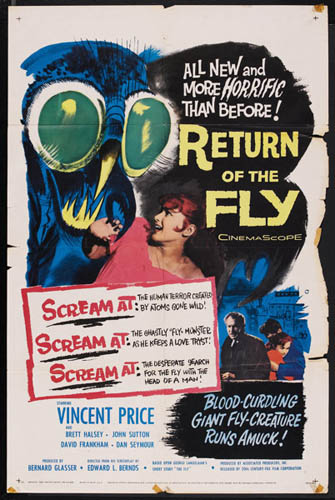
Fifteen years after his father Andre’s disastrous experiments, Philip Delambre and his uncle Francois attend the funeral of Philip’s mother Helene, who has committed suicide. Philip moves into the old family home and becomes determined to vindicate his father by successfully completing his work, and, despite Francois’ refusal to help, proceeds, hiring an assistant Alan Hines. Alan however is actually Ronald Holmes, an industrial spy working for a shadowy cohort just named Max, who wants to sell the secrets he has discovered. Ronald kills a secret agent who has been pursuing him and puts the body in one of the transporting pods, but when rematerialized, he has the hands of a guinea pig that had been disintegrated earlier. Then Phillipe interrupts his activities and is in turn put in the transporter, with Ronald adding a fly……
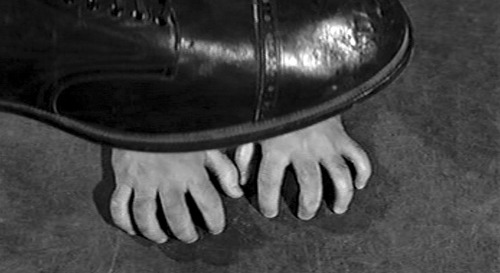
Pretty much what you would expect from a film entitled Return Of The Fly, this first sequel is a much more conventional affair than its predecessor. Whilst the original movie was made with care, this one was seriously rushed with its only consideration being the box office. That is not to say the film is bad though. As a ‘B’ monster movie it’s pretty good fun, and, whilst it isn’t really as good a film, a case could be made for saying it’s more entertaining. Despite its huge commercial success, Fox gave the sequel a lower budget, even making writer/director Edward Bernds rewrite parts of his script so it could be filmed more cheaply. More money was saved by filming it in black and white, using some of the same sets, and not having any of the cast return except Vincent Price, who claims the original version of the script, before it was drastically altered, was much better than the one that was filmed. Released on a double bill with The Alligator People, it did fairly good box office. In the UK, a non- gory shot of a foot crushing a guinea pig [more on that scene later] was removed but was later restored for video and DVD releases.
Much time is spent in the early reels tying the story of this film with that in the original and then laboriously setting up the plot, resulting in Return Of The Fly being a little dull for the first third or so. Of course little happened during some passages of the first movie but the writing, direction and acting still managed to make it all quite compelling, whereas in this one you’re just waiting for someone to enter that transportation device. A subplot of industrial espionage is brought in and makes things a bit more fun, but seems a laborious set up to eventually get Philip into the transmitter, though there is a nicely odd and actually rather disturbing bit when the secret agent’s body get mixed up with the guinea pig. The sight of the man with guinea pig hands is a little unsettling, but nothing compared to what follows, as we see a guinea pig running around with the man’s arm and hands, which is then crushed by a foot, out from which we can see the hands start to rapidly get bigger! The poor animal actually looks real when it is being crushed too. Anyway, Philip eventually becomes the Fly, and the second half is typical monster movie stuff, as he creeps about and takes revenge, crushing one man’s bones with really effective sound effects, though the happy ending that comes soon after seems very abrupt and very pat. It does make a nice contrast with The Fly’s ending though I suppose.
Yes we do get much footage of the monster in the second half, and he looks reasonably intimidating from the distance, but when seen up close his enormous head, which is at least three times the size of the previous Fly’s head, makes the creature look funny. In some scenes it’s obvious that star Brett Halsey is having trouble balancing the head properly and is about to fall over. This is a shame, because there was possible scope for a more conventionally frightening Fly movie and they partially botched it. Director Edward Bernds does use the Widescreen format to some advantage, often having characters in long shots dominated by their surroundings [victims of their fate maybe?] and often on the edges of the screen, meaning that if seen in Fullscreen the movie is almost a waste of time. Bernds otherwise doesn’t seem much interested in the proceedings, and while his script overall does a reasonable job in fulfilling the obvious instructions from the studio, it doesn’t fulfil its potential. A good example is a rather tense scene, similar to one in the original, where Phillipe gets into the room where his childhood sweetheart and love interest Cecille is sleeping. He holds her hand with his fly arm, whereupon she wakes up, screams and nothing happens. Nor is the situation built on later, it’s just thrown away, with no room for any emotional intensity like was found in some of the scenes between the transformed Andre and Helene in the first movie.
Halsey, who decades later ended up in Lucio Fulci movies, is a fairly likeable lead though as with any Vincent Price movie, it’s Price who you watch whenever he is onscreen. Though this might be the first movie in which he employed his famous furrowed brow, indicating to the audience that he’s not taking things seriously and neither should the audience, that velvet toned voice delivers the mediocre dialogue as if it were Shakespeare. He also has a wonderful fainting scene! The music score, again partly by Paul Sawtell but here composed with his oft-partner Bert Shafter, is much more conventionally melodramatic then that of The Fly, and there is much more of it too. I like Return Of The Fly despite its many flaws – it provides corny fun and it’s just about different enough from The Fly to justify its existence, though I wish it had been made with a bit more care and ambition.

Patricia Stanley escapes from a mental asylum and is picked up by Martin Delambre, who is the grandson of Andre. Martin, his brother Albert and their father Henri are carrying on the work on transportation and seem to be able to transport a person from Montreal to and vice versa, though Henri seems to have a scarred chest as a result. Martin has something approaching a seizure and briefly turns disfigured, but still brings Patricia home and they get married, but who is the badly scarred woman playing the piano at night, who are the deformed creatures locked up and why does Martin deny all knowledge of these things, to the point where Patricia thinks she is going mad again…………

Whereas Return Of The Fly has been in fairly constant circulation, often being released with The Fly as a double bill even sometimes in cinemas, this third movie of the franchise hasn’t been seen much at all and was almost a lost film until its release on DVD on 2007. I do remember a UK TV showing back in the 90s, and I had to catch it because to many old horror movies fans the film had attained a kind of mystique. It’s really quite an odd little film, which alters events that happened previously and doesn’t actually have a Fly monster in it. This must have disappointed many upon release, though it would have been truly ridiculous to have someone in a transportation pod with a fly a third time, so I suppose writer Brian Spalding, who has assisted in the script for Return was in a no-win situation either way. The film is extremely schlocky but it’s quite a compelling little piece, surprisingly morbid and grim in tone, and I consider it a somewhat better film than Return. It was filmed in England in 1965, six years after the previous one, because producer Robert Lippert had decamped to the UK supposedly irritated by the increasing cost of making films in the US. Because Vincent Price was under contract to American International Pictures at the time [usually busy making Edgar Allan Poe adaptations], Lippert opted for Claude Rains, but he turned down the part of Henri and Brian Donlevy was brought on instead. The film was made on a very low budget indeed but at least had a good director in Don Sharp. Released in the UK on a double bill with Devils Of Darkness, it was only a moderate success, and soon after virtually disappeared for many years.
Curse Of The Fly begins rather strangely, with the titles played over Patricia escaping from the asylum in her underwear, a sequence which seems to go on for ages. Then for a while we have a sort of strange romance between the supposedly mad Helen and the supposedly normal Martin, though Martin has a habit of occasionally having his face change, looking all burnt and disfigured. This is intercut with some scenes involving the other characters working on the teleportation business, though frankly these are none too convincing because the machinery, despite being supposedly more advanced, is far more primitive looking due to the film’s budget. Once Patricia is at the house a real sense of Gothic mystery is established, with unseen creatures locked in pig sties and a partially disfigured woman prowling around. It seems that the Wan, the wife of the housekeeper Tai [get it?] is out to drive Patricia mad, though anyone would be uncomfortable at the sight of some of the worst Oriental makeup, which makes Patricia Rees look in a china doll [maybe that was the intention?] ever put on screen. Nonetheless there are strong influences of Jane Eyre and Rebecca, and these work well, better actually than some of the creature makeup. There is one terrific cut to a deformed face climaxing a nicely suspenseful scene of Patricia looking where she isn’t supposed to, but once the monster is shown fully you’re more likely to laugh than be scared or revolted.
 Still, the somewhat grisly, cruel feel and the sense of doom give the film an edge, and though there is no onscreen violence this time [a lot happens off screen though], there is one quite gruesome moment, which looks forward to the excesses of the two later movies and was unsurprisingly cut for the UK cinema release though later restored, where two of the ‘freaks’ are transported together and end up as one yucky mess. This is only seen at a distance but is still quite surprising, and indeed the whole movie has far more of the kind of body horror that David Cronenberg would explore than the first films do. The screenplay is quite well thought through at times. I liked the way the apparently mad Patricia gets more and more sane throughout the film despite experiencing crazier and crazier events, in a weird kind of shock treatment, and the plot twists are spread out well and nicely executed though few if at all will come as any kind of surprise. Sadly though Spalding felt the need to change past ‘events’, so that in this movie we here that Andre [the ‘Fly’ of the first film] re-entered the transportation machine with the fly and was changed back to normal, while the things that happened in Return didn’t actually happen at all but instead all descendants of Andre were born with fly genes so they sometimes age. Honestly, this total disregard for consistency and fans of these movies leaves a bad taste and undermines the many good aspects of this movie.
Still, the somewhat grisly, cruel feel and the sense of doom give the film an edge, and though there is no onscreen violence this time [a lot happens off screen though], there is one quite gruesome moment, which looks forward to the excesses of the two later movies and was unsurprisingly cut for the UK cinema release though later restored, where two of the ‘freaks’ are transported together and end up as one yucky mess. This is only seen at a distance but is still quite surprising, and indeed the whole movie has far more of the kind of body horror that David Cronenberg would explore than the first films do. The screenplay is quite well thought through at times. I liked the way the apparently mad Patricia gets more and more sane throughout the film despite experiencing crazier and crazier events, in a weird kind of shock treatment, and the plot twists are spread out well and nicely executed though few if at all will come as any kind of surprise. Sadly though Spalding felt the need to change past ‘events’, so that in this movie we here that Andre [the ‘Fly’ of the first film] re-entered the transportation machine with the fly and was changed back to normal, while the things that happened in Return didn’t actually happen at all but instead all descendants of Andre were born with fly genes so they sometimes age. Honestly, this total disregard for consistency and fans of these movies leaves a bad taste and undermines the many good aspects of this movie.
Sharp directs with considerable skill and a nice sense of visual symmetry at times – notice for instance how Patricia constantly looks trapped – while Carole Gray is very convincing as Patricia. The script does go into her background a little though never really tells us if she was ever actually mad or not, and that works very well, leaving Gray to drop subtle little hints in her performance. George Baker in an early role as Martin is disappointingly wooden though and weakens the love story a little. Basil Emmott’s elegant cinematography really makes the most of the film’s central house set, really giving a sense of a place full of dark secrets, while Paul Sawtell returns to score this one alone and creates probably the best score of the three films. The opening credit music is terrific alone, nicely alternating the beautiful piano –dominated theme which becomes Patricia’s theme with very busy, dissonant music that looks forward to the terrors that she will encounter. Sawtell constantly emphasises the emotion in his score, and was that the love theme from The Fly I heard mingled in occasionally? Watching Curse Of The Fly for the first time in over fifteen years [I never recorded that TV showing], I was surprised at how interesting and strong a movie it is, for something that was a quick, cheap follow-up. It’s no classic whatsoever, but has odd images and sequences will are very resonant and may stick in the mind, and is far better than it really has a right to be!
COMING SOON- Part Two, where Ross Hughes will look at the two films that continued the franchise in a much more horrifying manner in the 80s!




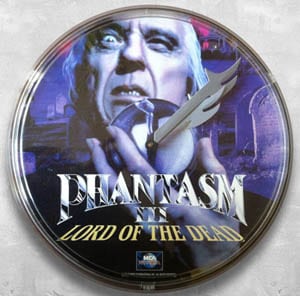
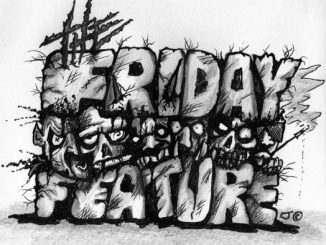
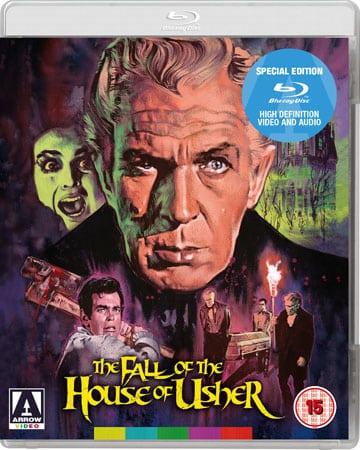
Be the first to comment